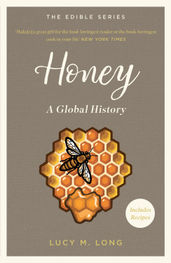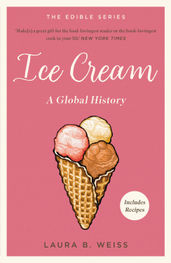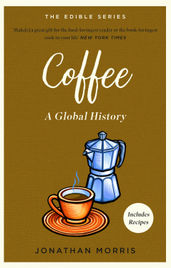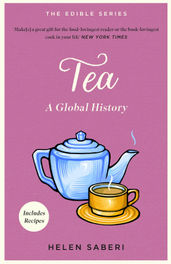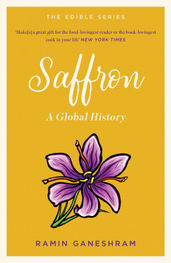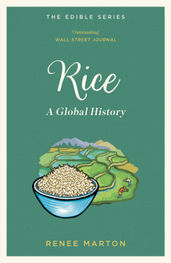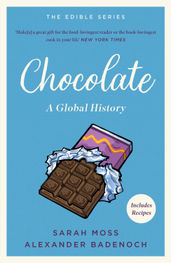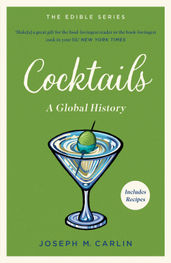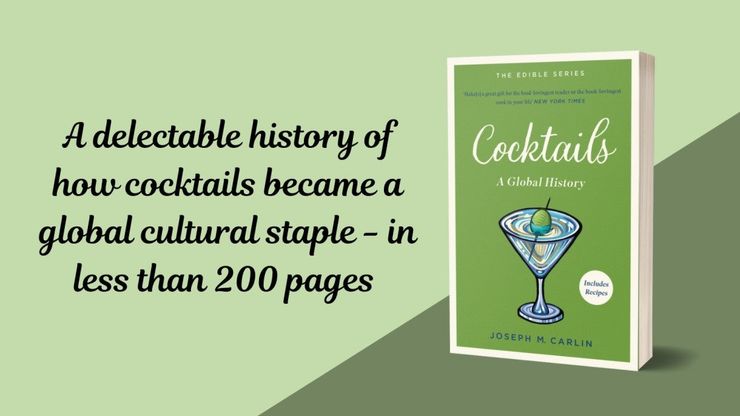Introducing the Edible Series!
Edible is a revolutionary series of books dedicated to food and drink that explores the rich history of cuisine. Each book reveals the global history and culture of one type of food or beverage.
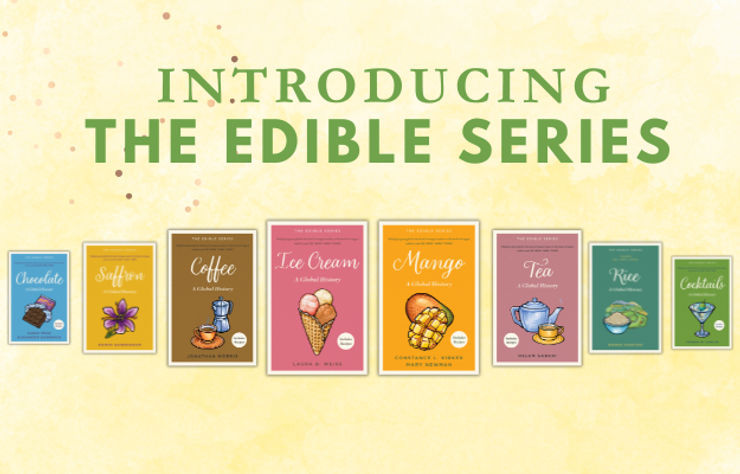
Honey: A Global History
by Lucy M. Long
SHORT AND SWEET – THE HISTORY OF HONEY
Whether drizzled into our tea or used as a term of endearment, honey is relished around the world as a natural sweetener with healing properties. Yet this humble food – that requires very little processing for human consumption – has far greater cultural significance than simply satisfying sugar cravings. In its long history, honey has been variously treasured – as a metaphor, food, medicine and a preservative.
Folklorist and food scholar Lucy M. Long details how this ‘nectar of the gods’ has featured in politics, religion, economics and popular culture around the world for centuries. From being used in sacred rituals by ancient cultures, it remains just as significant to human civilization today, even in the face of the alarming ecological crisis threatening bee populations everywhere.
Complete with cross-cultural recipes and vibrant illustrations, Honey: A Global History is a surprising and satisfying treat.
Mustard: A Global History
by Demet Güzey
The delightful history of one of the world’s favourite condiments
Whether grainy or smooth, as seed, sauce or oil, spicy or sweet, Dijon, American, Kasundi or English – mustard adds flavour to food and lives around the globe. It is more than a condiment – it is the embodiment of civilization because the story of mustard is the story of medicine, myth and magic.
Mustard: A Global History weaves in and out of kitchens across the world to explore the origins of this humble seed and its use in Greek, Chinese and Yunani medicine, and its place in literature, religion and culture. Demet Güzey shares fascinating anecdotes like mustard plasters being used to treat melancholy, the legend of ‘the mustard seed trail’ and how it came to be ‘the condiment of the poor’.
Packed with fascinating anecdotes and vivid photographs and illustrations, as well as a selection of historic and modern recipes, this is the fascinating story of how a tiny seed made its mark on the world.
Cheese: A Global History
by Andrew Dalby
The flavourful story of cheese from its prehistoric invention to modern rebirth
Cheese is among the most ancient and nourishing of civilized foods. Despite its many uses and variations, however, there has never been a global history of cheese. Here at last is a succinct, authoritative account of not only how cheese was invented but also where, when and why.
Learn about the most ancient varieties of cheese and the first written description of the cheese-making process; the luxury cheeses of classical Rome; the medieval rule of thumb for identifying good cheese and the amazing story of how one cheese-loving novelist saved his Parmesan from the Great Fire of London. Explore how our shared passion for cheese as human beings impacted the early establishment of global trade, and if real cheese can survive the current imperative to globalize and sterilize all our food.
Packed with entertaining facts, anecdotes and images, Cheese also features a selection of historic recipes. For those who love their stinky Stilton, salty pecorino and creamy paneer, this book is the perfect snack.
Ice Cream: A Global History
by Laura B. Weiss
A LIVELY HISTORY OF THE WORLD’S FAVOURITE FROZEN TREAT
Be it soft serve, gelato, sorbet or kulfi, ice cream adorns restaurant menus and home freezers across the world in one form or another. Once considered an indulgence befitting only the elite, this sweet treat has evolved into one of the most popular mass-market food products ever developed.
In Ice Cream: A Global History, author and journalist Laura B. Weiss takes us on a fascinating journey through the ages, from ancient China to World War II Germany to modern-day Tokyo, to tell the lively story of how this delicious dessert became a global sensation. Featuring Chinese emperors, English kings, former slaves, women inventors, shrewd entrepreneurs, Italian immigrant hokey-pokey ice cream vendors and a gourmand American First Lady, Ice Cream makes for a surprising and delightful read.
Sprinkled with vibrant photographs, illustrations and recipes, this is a fun history of everyone’s favourite childhood treat, as alluring as the siren song of your neighbourhood ice-cream vendor.
Mango: A Global History
by Constance L. Kirker
A DELECTABLE HISTORY OF THE KING OF FRUITS
From the royal Alphonso to the lip-smacking Chausa, nothing can beat the rush of pleasure from biting into a ripe mango. With its endless varieties, differing in colour, size and flavour, the fruit inspires an astounding cultural devotion.
The mango is the Indian subcontinent’s gift to the world – its roots in northeast India expanding globally over 60 million years. Appearing in the verses of Hindu epics and Ghalib’s poetry; the food habits of the Harappans and the travelogues of Ibn Battuta; the horticultural experiments of Mughal emperors and Jesuit priests, the mango has shaped South Asian culture far beyond its culinary uses. Its long history is intertwined with European colonization and the transatlantic slave trade, even gaining symbolic importance during Mao Zedong’s Cultural Revolution, and continues to drive innovation in food sustainability and preservation.
Plunge into the juicy details and surrender to the summery nostalgia of this beloved fruit with Mango: A Global History. Complete with beautiful illustrations and recipes, this is a flavourful journey across epochs of human civilization.
Coffee: A Global History
by Jonathan Morris
Dive into the fascinating history of the world’s best-travelled beverage
Everywhere humans have been, coffee has followed. Whether plodding through the snows of Antarctica or floating in zero gravity on the International Space Station, or simply refuelling before a regular day at the office – this warm beverage is an essential part of routine life all over the globe.
Once known as the ‘Wine of Islam’, cultivated on Yemen’s mountain terraces and traded among the Muslim peoples around the shores of the Indian Ocean and the Red Sea, it travelled as far as Java and Jamaica as a colonial good. In a first-of-its-kind account, Coffee traces how this wondrous bean made its way out of the forests of Ethiopia to the fincas of Latin America and Ottoman coffee houses.
Historian Jonathan Morris relates the remarkable story of who the drinkers of coffee were, how they prepared it, why and where they drank it, and what it tasted like. Follow its enlivening aroma through farms and plantations across various regions, discover who worked them and who owned them, how the beans were processed, traded and transported, and finally, the geopolitics governing the coffee industry today. Complete with vibrant illustrations and delicious recipes, this is a pocket-sized guide to navigating the world in your cup.
Tea: A Global History
by Helen Saberi
The captivating history of the world’s most adaptable beverage
Tea is sipped, whisked, boiled, iced, flavoured, spiced, mixed with milk and sugar, or enjoyed with salt and butter across various geographies. It is an essential element of both ceremony and leisure in various cultures – a universal symbol of harmony and hospitality.
But do not be deceived by its unassuming appearances, food historian Helen Saberi warns us – tea has a rich and vivid history steeped in ritual and religion, adventure and enterprise, smuggling and revolution, literature and social change. From its legendary beginnings in China to the role of India in bringing this prized plant to the world; how it came to symbolize the American pursuit for independence, and finally, the myriad varieties of tea being cultivated everywhere from Argentina to Zimbabwe today – tea has truly established itself as a binding global cultural force.
This concise volume maps the evolution of tea-drinking and hospitality, tracing the history of its trade along ancient caravan routes, its arrival in the West aboard clipper ships, the various traditions around tea gardens, teahouses, tea dances and the British afternoon tea, the invention of tea bags and iced tea, and the newest addition to this marvellous legacy – the bubble tea. With vivid illustrations and recipes from around the world, Tea is a rejuvenating treat for curious minds.
Saffron: A Global History
by Ramin Ganeshram
‘Outstanding’ Wall Street Journal
‘Backbone of the food history section’ Bookseller
‘These are food memoirs, salacious and exotic, colourful, powdered, sweet, greasy and globe-trotting’ Chicago Tribune
‘Exquisite. A brilliant and informative book’ Monica Bhide
The dramatic history of the world’s most precious spice
Often worth its weight in gold, saffron has enchanted civilizations for centuries with its vibrant sunset hue and enchanting aroma. From the cave art of ancient Mesopotamia to the frescoes of Santorini, the dyed wrappings of Egyptian mummies, and the saffron robes of Buddhist monks, this extraordinary spice has left its golden thread woven through history, culture, and cuisine. It has been the catalyst for trade wars, as well as smuggling schemes, and shaped medicine and cosmetics. Replete with delicious recipes and surprising anecdotes, Saffron: A Global History traces the many paths taken by the spice, revealing the allure of an ingredient sought globally by merchants, chefs, artists, scientists, clerics, traders, warriors and black market smugglers.
Rice: A Global History
by Renee Marton
‘Outstanding’ Wall Street Journal
‘Makes a great gift for the food-lovingest reader or the book-lovingest cook in your life’ New York Times
‘Backbone of the food history section’ Bookseller
‘These are food memoirs, salacious and exotic, colourful, powdered, sweet, greasy and globe-trotting’ Chicago Tribune
An accessible, essential history of the world’s most versatile grain
Few foods are as universal as rice, yet its story is anything but ordinary. From the ancient paddies of Asia and Africa to kitchens and markets around the world, this unassuming grain has become both a dietary staple and a cultural cornerstone. In this lively and engaging account, Renee Marton unravels the rich history of rice, tracing its remarkable journey through centuries of trade, migration and culinary innovation.
Each chapter explores how rice has shaped societies and cuisines, from sustaining mighty empires to inspiring rituals, music and art. Along the way, it examines how enslaved and indentured labourers brought rice to new lands, how modern marketing gave rise to a processed rice industry, and why the type of rice on your plate often reflects deep cultural roots.
Bursting with insights and tantalizing recipes from across the globe, Rice offers a captivating exploration of how this humble grain continues to define and connect us.
Chocolate: A Global History
by Alexander Badenoch
PRAISE FOR THE SERIES
‘Makes a great gift for the food-lovingest reader or the book-lovingest cook in your life’ New York Times
‘Has established itself as the backbone of the food history section’ Bookseller
‘These are food memoirs, salacious and exotic, colourful, powdered, sweet, greasy and globe-trotting’ Chicago Tribune
'Outstanding' Wall Street Journal
Chocolate cake, fudge brownies, chocolate chip cookies, chocolate truffle boxes, steaming cups of hot cocoa … Chocolate is synonymous with indulgence, filling dessert menus and millions of hearts with ecstasy all over the world. Since Spanish explorers first encountered the magical cocoa beans in sixteenth-century South America, it has cast its spell at a global level, becoming an addictive and powerful force to be reckoned with.
In Chocolate, Sarah Moss and Alec Badenoch guide readers through the remarkable evolution of this near-universal obsession. They trace its roots from the earliest Spanish accounts of how the Aztecs and Mayans used chocolate in sacrificial rituals and as currency, to Linnaeus proclaiming the cocoa tree as the ‘food of the gods’, not to mention its enduring reputation as a potent aphrodisiac.
Readers are invited to dive into a delectable, wondrous journey through the cobbled lanes of history, witnessing culture and commerce take shape in captivating full-colour photographs as *Chocolate *reveals the irresistible mystique of the world’s most beloved sweet.
Cocktails: A Global History
by Joseph M. Carlin
PRAISE FOR THE SERIES
‘Makes a great gift for the food-lovingest reader or the book-lovingest cook in your life’ New York Times
‘Has established itself as the backbone of the food history section’ Bookseller
‘These are food memoirs, salacious and exotic, colourful, powdered, sweet, greasy and globe-trotting’ Chicago Tribune
‘Outstanding’ Wall Street Journal
Gimlet, negroni, Manhattan, Long Island iced tea, flirtini, screwdriver … Cocktails have traversed centuries and continents to reach their iconic status today. But how did they come to be? It all began in seventeenth-century America with a rum punch – a simple blend of five ingredients – which gave rise to a whole new food science. In Cocktails: A Global History, Joseph M. Carlin embarks on a fascinating journey through the history of these beloved concoctions, illuminating how a dazzling early innovation became a global cultural staple.
He explores not only the drinks themselves but their ripple effect across society, including the sparking of a cocktail-centric spin-off revolution – from cocktail parties and stylish cocktail dresses to cocktail wieners and even the infamous Molotov cocktail.
Complete with tempting recipes, Cocktails is an essential collectible for both history buffs and drink enthusiasts alike – the perfect companion to a morning mimosa or an evening martini.
